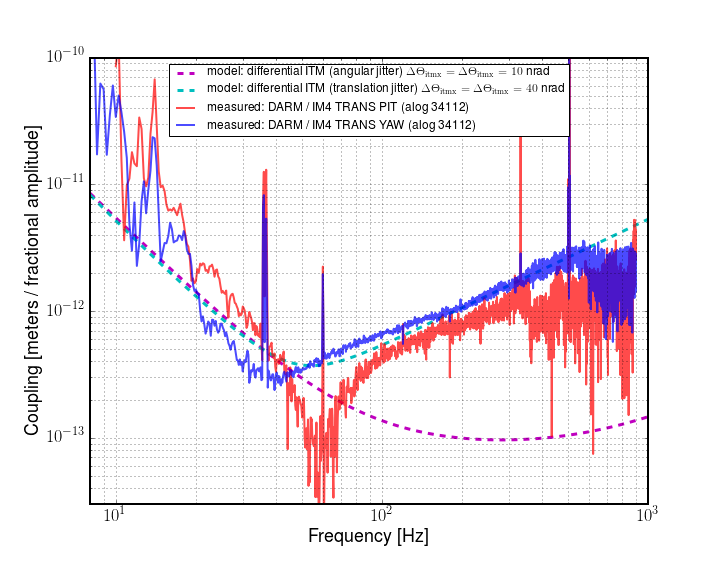kiwamu.izumi@LIGO.ORG - posted 16:43, Monday 06 March 2017 (34629)
Simulated jitter versus measured jitter
Sheila, Kiwamu,
This is a followup/update on the beam pointing jitter measurement (34112). We simulated beam pointing jitter with FINESSE.
If we believe the simulation results, we can draw two conclusions:
- The couplings are from differential ITM
- The ITMs are misaligned by several 10 nrad from their optimum.
The plot below shows a preliminary result of the simulation with H1's O2 specific parameters.
Some details of the simulation can be found in T1700080 (although the results in the document are specifically for a full power interferometer). Here is a brief list of remarks.
- In order to get a f-shape rise above several 10 Hz, the coupling has to be through differential ITM.
- To get the measured level of couplings, the ITMs have to be misaligned such that Delta Theta_IX = Delta Theta_IY = 10-40 nrad.
- Note that in T0900142, the test masses are tilted by 1 nrad, an order of magnitude smaller than the ones shown above.
- With such ITM misalignment, jitter components which act as lateral beam shift at IM4 (or translation) couple the most to DARM above 40 Hz.
Images attached to this report

